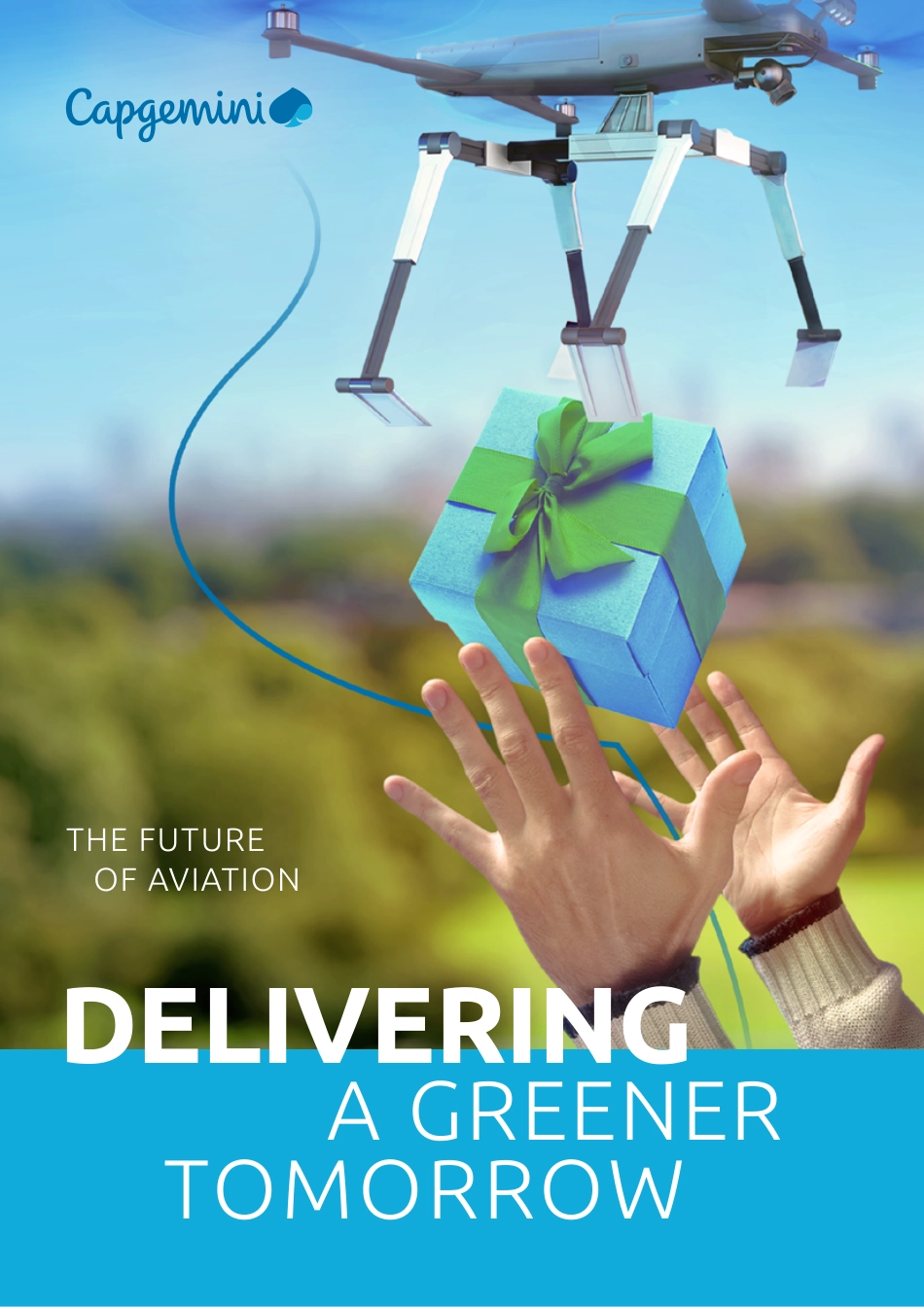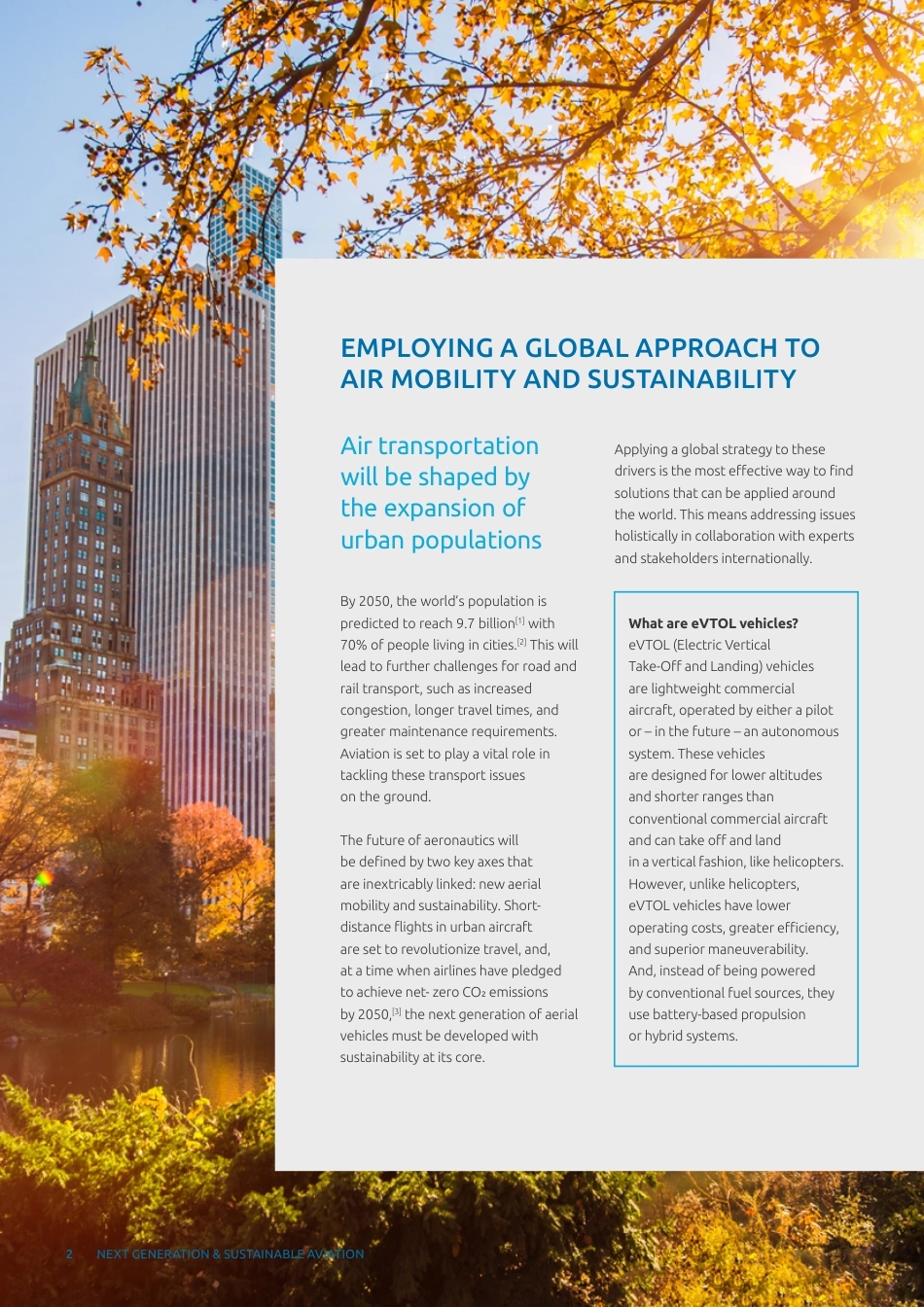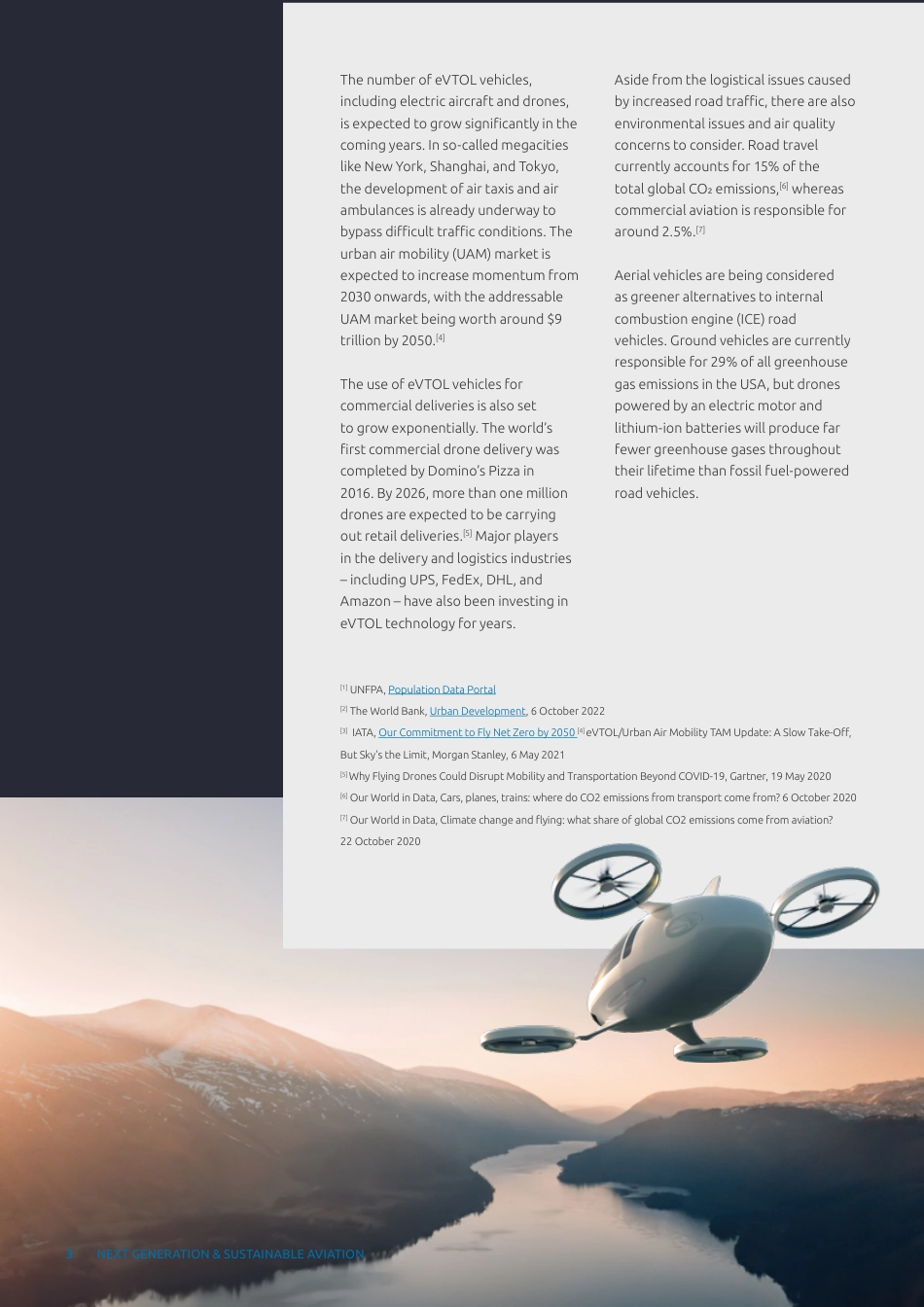A GREENER TOMORROWDELIVERINGTHE FUTURE OF AVIATIONAir transportation will be shaped by the expansion of urban populations By 2050, the world’s population is predicted to reach 9.7 billion[1] with 70% of people living in cities.[2] This will lead to further challenges for road and rail transport, such as increased congestion, longer travel times, and greater maintenance requirements. Aviation is set to play a vital role in tackling these transport issues on the ground. The future of aeronautics will be defined by two key axes that are inextricably linked: new aerial mobility and sustainability. Short-distance flights in urban aircraft are set to revolutionize travel, and, at a time when airlines have pledged to achieve net- zero CO₂ emissions by 2050,[3] the next generation of aerial vehicles must be developed with sustainability at its core. Applying a global strategy to these drivers is the most effective way to find solutions that can be applied around the world. This means addressing issues holistically in collaboration with experts and stakeholders internationally.What are eVTOL vehicles? eVTOL (Electric Vertical Take-Off and Landing) vehicles are lightweight commercial aircraft, operated by either a pilot or – in the future – an autonomous system. These vehicles are designed for lower altitudes and shorter ranges than conventional commercial aircraft and can take off and land in a vertical fashion, like helicopters. However, unlike helicopters, eVTOL vehicles have lower operating costs, greater efficiency, and superior maneuverability. And, instead of being powered by conventional fuel sources, they use battery-based propulsion or hybrid systems.EMPLOYING A GLOBAL APPROACH TO AIR MOBILITY AND SUSTAINAB...



